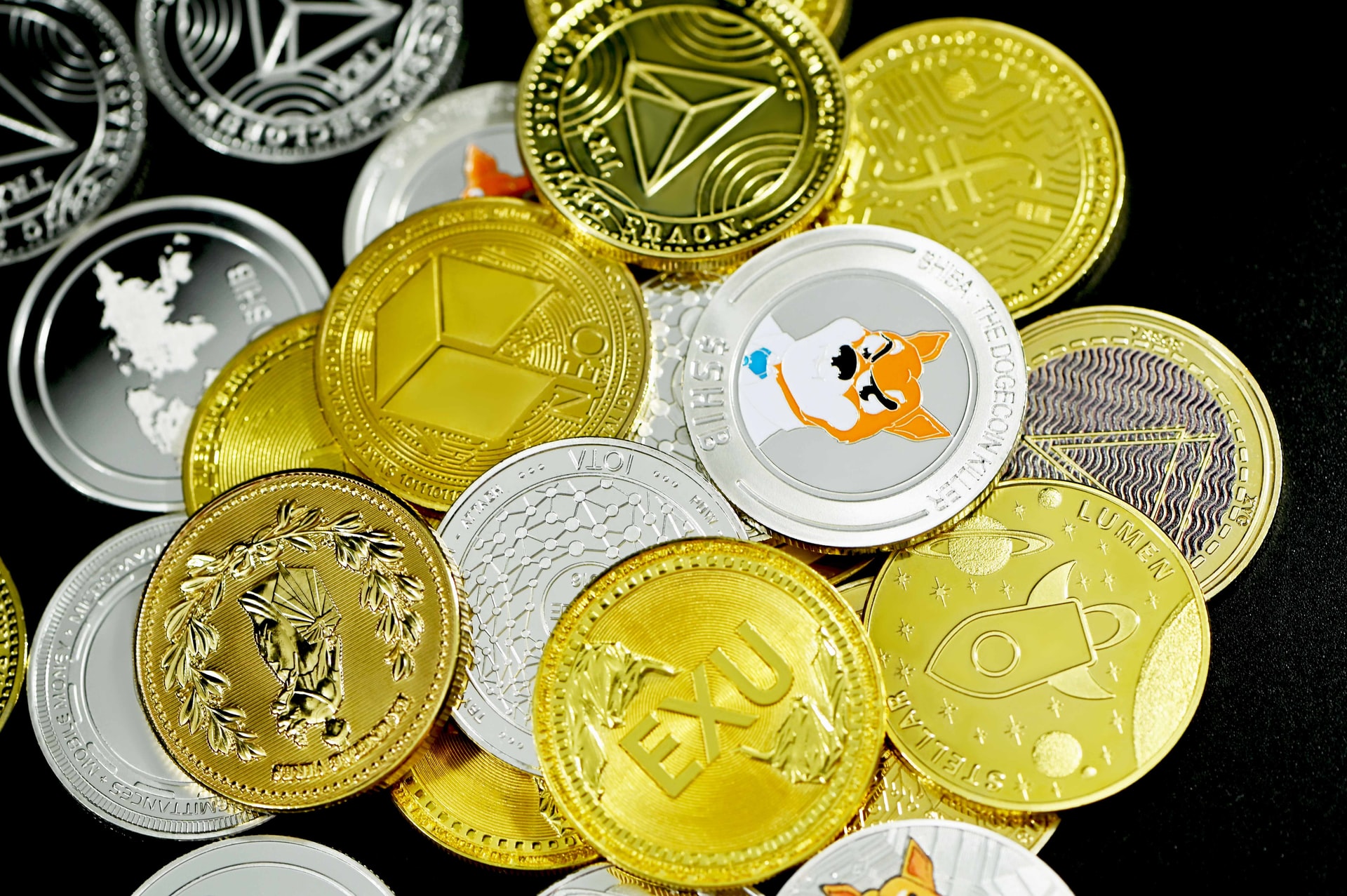According to estimates, the cryptocurrency market is valued at more than $2.2 trillion currently.
The crypto market was only worth $10 million in 2011 when Bitcoin was the only digital currency we knew about. In just over a decade, the crypto market cap is on its way to almost $3 trillion, with approximately more than 15,000 cryptocurrencies in existence.
Today, we will explain the types of cryptocurrencies, their technologies, and some of the most popular cryptocurrencies on the market.
There were just a few cryptocurrencies back then, and their primary purpose was to provide a cheap and rapid alternative to the US dollar for cross-border payments.
When Bitcoin first appeared in 2009, it had almost negligible competition in the freshly formed field of digital cash. However, new varieties of cryptocurrency began to app explainer by 2011, as rivals used the blockchain technology on which bitcoin was based to build their own platforms and currencies. Suddenly, the race to produce additional cryptocurrency had begun.
Today, there are hundreds of different types of cryptocurrencies. While each is meant to give a unique feature or function, the majority are based on similar ideas to those that built bitcoin.
Why are There Different Types of Cryptocurrency?
Blockchain technology is open source, meaning any software developer can use the original source code and create something new with it. Developers have done just that. There are estimated to be more than 15000 different cryptocurrencies in circulation as of this writing, and the figure keeps increasing. For reference, it was only about a few years ago that the number of cryptos surpassed 1,000.
It is important to note that not all of them are reliable, and some are created scammers.
Part of the reason for the surge is the relative ease with which new cryptocurrencies can be created. The source code of one can be used to build another. For example, the Ethereum blockchain network can be used to create your own personal digital coins or even applications upon the technology.
Another reason for new cryptocurrencies emerging is connected to how they are mined. Bitcoin mining, for example, takes a huge amount of electricity, and several people have tried to come up with alternative solutions to save the environment.
There are majorly two ways to mine cryptocurrency:
Proof of Work vs Proof of Stake
Proof of work and proof of stake are two distinct validation approaches used to validate transactions before they are added to a blockchain that rewards verifiers with more of the crypto they are mining. Cryptocurrencies generally utilise either proof of labour or proof of stake to validate transactions.
Proof of work
Proof of work is a way of authenticating transactions on a blockchain. An algorithm generates a mathematical challenge that computers compete to solve.
Each participating computer, referred to as a “miner,” solves a mathematical challenge that aids in the verification of a set of transactions known as a block, which is subsequently added to the blockchain ledger. The first computer to successfully complete the task gets awarded a modest bitcoin sum for its work.
The competition to solve blockchain riddles may need significant computing power and electricity and isn’t good for the environment.
Proof of Stake
Some cryptocurrencies utilise a proof of stake verification approach to decrease the amount of electricity required to review transactions. The number of transactions any user may verify using proof of stake is limited by the amount of crypto they are prepared to stake or temporarily lock up in a community safe in exchange for the opportunity to participate in the process.
If a stake owner (also known as a validator) is chosen to validate a fresh batch of transactions, they will be paid with bitcoin, perhaps in the amount of the block’s aggregate transaction fees. To deter fraud, if you are picked and verify incorrect transactions, you will lose a portion of the money you bet.
People have developed cryptocurrencies and tokens on these two models to make the crypto industry sustainable and harmless to the environment.
Tokens vs Cryptocurrency Coins
The distinction between a coin and a token is a very important one. When we talk about cryptocurrency, the phrases “coin” and “token” are commonly used. People often get confused between them. While they may appear to be synonymous, there is a distinction to be made, and it is critical to understand them.
A digital currency is formed on its own blockchain and functions similarly to traditional money. It may be used to hold value and as a medium of exchange between two parties conducting business with one another. Bitcoin and Litecoin are two examples of coins.
On the other hand, Tokens may be used for much more than just digital money. Tokens are generated on top of an existing blockchain. They can be utilised as a part of a software programme, verifying identification or tracking things as they move through the blockchain., or they can even represent digital art. Tokens can be retained for their monetary worth or sold and staked to generate interest. Tokens include Uniswap, Chainlink, and Polygon.
Coins are a direct representation of a proposed medium of exchange.
Tokens, on the other hand, are a type of asset. A token symbolises what a person possesses, but a coin indicates what they are capable of possessing. Furthermore, everyone has used a token at some point in their lives, even if it was not in digital form.
Your vehicle title, for example, is a token. You transfer the title’s worth to another individual when you sell a vehicle. However, you cannot purchase anything else with that title like you can with a crypto coin.
Some of the Most Popular Cryptocurrencies in 2022:
Bitcoin was first introduced in 2009. The world’s first successful cryptocurrency was created by “Satoshi Nakamoto” (real identity and origin unknown). Bitcoin is a decentralised digital currency that users may purchase, sell and exchange without the involvement of a middleman such as a bank. There is a limited quantity; only 21 million bitcoins may be generated.
The Bitcoin blockchain is a complete record of the network’s history that has been authenticated by Bitcoin software users (nodes). This means security. Unlike most digital data, bitcoins cannot be readily copied and manipulated. Bitcoins are utilised as money because they are rare, divisible, and transferrable.
Ethereum was founded in 2015. Vitalik Buterin designed it.
The decentralised Ethereum network enables the creation and execution of apps, smart contracts, and other network transactions. In contrast to Bitcoin, the Ethereum network may conduct calculations as part of the mining process. Ether is a digital currency used in financial transactions, as an investment, and as a store of value. Ethereum is the blockchain network where Ether is stored and traded.
Dogecoin was first introduced in 2013 by Jackson Palmer and then by Billy Markus.
Dogecoin, like bitcoin and ethereum, is a decentralised cryptocurrency. The coin began as a joke to become a satirical take on bitcoin based on a famous dog meme. Unlike Bitcoin, which was supposed to be scarce, Dogecoin was designed to have a large number of coins. There is around 130 billion DOGE. Every minute, miners create approximately 10,000.
That large sum is a critical component of the concept. Dogecoin was established as a low-stakes alternative to Bitcoin. When it first went up in late 2013, it quickly drew a sizable internet following. Even now, it’s religiously followed by crypto investors as Elon musk has constantly supported it, even going as far as terming himself the ‘ Dogefather.’
Litecoin (LTC), which debuted in 2011, was one of the first cryptocurrencies to follow in Bitcoin’s footsteps and has been dubbed the “silver to Bitcoin’s gold.”
11 Charlie Lee, an MIT graduate and former Google developer, designed it.
Litecoin is built on an open-source worldwide payment network that is not governed by any central authority and use script as a PoW that can be decoded by consumer-grade central processing units (CPUs).
Litecoin is similar to Bitcoin in many aspects, except it has a higher block production rate and consequently a faster transaction confirmation time.
Cardano (ADA) is a “Ouroboros proof-of-stake” cryptocurrency developed by engineers, mathematicians, and cryptography professionals using a research-based methodology.
13 Charles Hoskinson, one of Ethereum’s five original founding members, co-founded the project. He left Ethereum after some issues with the way it was headed and eventually helped to build Cardano.
Cardano’s blockchain was established through considerable testing and peer-reviewed research by the Cardano team. The project’s researchers have published over 120 papers on blockchain technology, covering a wide range of issues.
Cardano aspires to be the world’s financial operating system by developing DeFi products comparable to Ethereum’s as well as solutions for chain interoperability, voter fraud, and legal contract tracking, among other things. Cardano is the sixth-largest market value at $33 billion as of January 2022, and one ADA trades for roughly $1.05.
Polkadot (DOT) is a one-of-a-kind PoS coin that aims to provide compatibility with other blockchains. Its protocol connects permissioned and permissionless blockchains and oracles, allowing systems to collaborate under one roof. Polkadot’s essential component is its relay chain, which enables network interoperability. Parachains, or alternative blockchains with their own native coins, are also supported for certain use cases.
Polkadot differs from Ethereum in that instead of only establishing dApps on Polkadot; developers may design their own blockchain while still benefiting from the security that Polkadot’s chain currently possesses.
We are always thinking about our assets and financial preparation for our family in the event that something were to happen to us. We hire attorneys to draft thorough wills to protect our families, but what about your digital assets? Clocr simplifies creating and managing a Digital Estate Plan, allowing you to safeguard assets of personal and financial worth to you and your family.
With Digital Estate Planning, which focuses on meeting the security and legal requirements of Digital Assets, the process of prioritising, organising, and sketching out your desires for your NFTs or Cryptocurrencies becomes extremely straightforward, and you can sleep well knowing your family is secured.
Investing in Cryptocurrency is simple, but planning for its future and security can perplex investors. Digital Estate Planning is a process that can help Cryptocurrency holders to organise and update Digital Assets (email accounts, blogs, social media accounts, photo libraries, cloud storage accounts, etc.) so that after sudden demise or incapacitation of the Cryptocurrency account owner, the beneficiaries have one place to go and access, manage, or close digital accounts according to the wishes of the deceased person.




